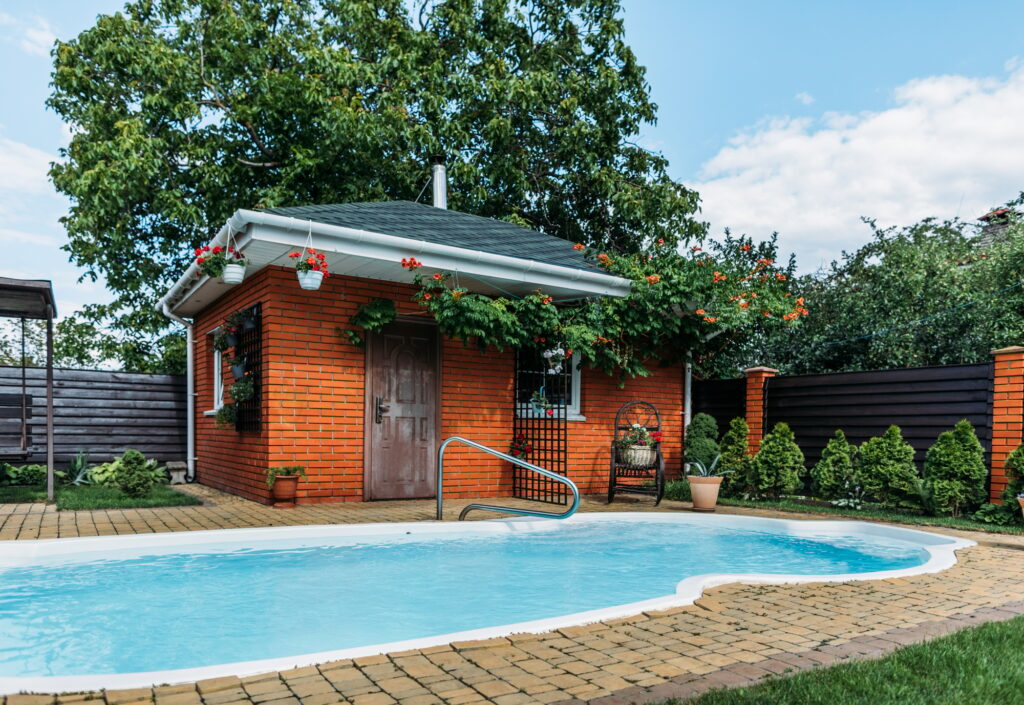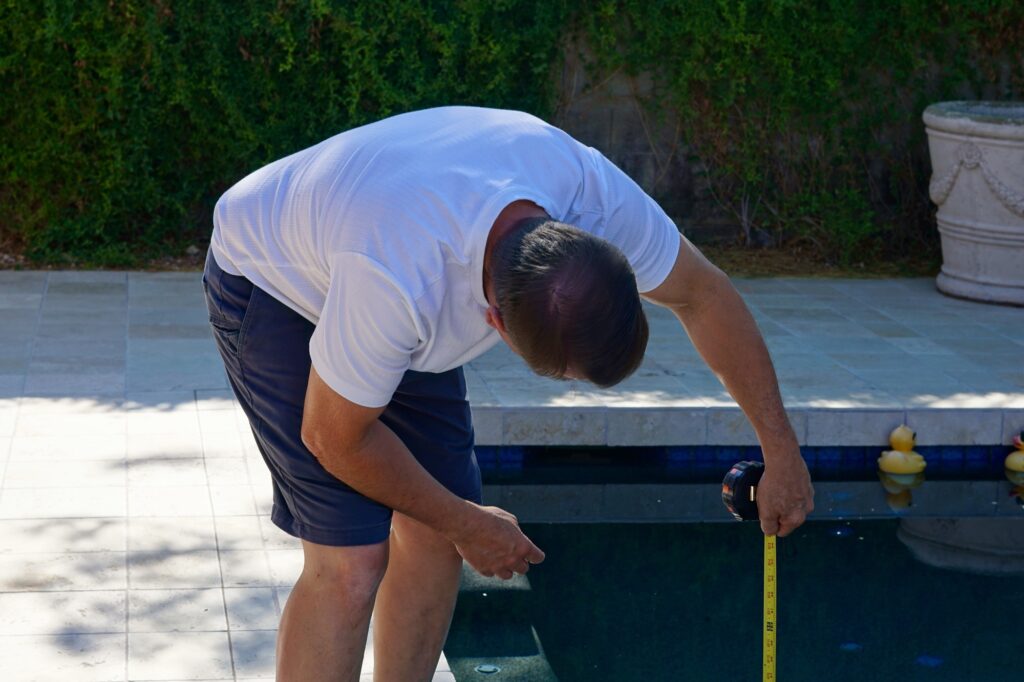How Much Water Loss in a Pool is Normal
Owning a swimming pool comes with a unique set of responsibilities, from maintaining water chemistry to keeping surfaces clean and equipment functional. However, one of the most overlooked yet commonly asked questions is: how much water loss in a pool is normal? While a certain amount of water evaporation is expected, losing too much water can signal a more serious issue—such as a leak in the pool shell, plumbing, or filtration system.
Understanding the normal range of water loss helps pool owners avoid unnecessary panic while also staying alert to warning signs of damage. If you’re unsure whether your pool’s water loss is routine or a cause for concern, this guide will help you make sense of what’s normal, what’s not, and when to bring in a professional inspection.

The Role of Evaporation in Water Loss
To accurately assess how much water loss in a pool is normal, we must first understand evaporation. Evaporation is the process by which water changes from a liquid to a vapor, typically caused by heat, wind, sunlight, and low humidity. In the context of a backyard or commercial pool, evaporation is inevitable—especially in warm or dry climates.
According to the U.S. Department of Energy, the average uncovered swimming pool can lose up to 1/4 to 1/2 inch of water per day due to evaporation. Over the course of a week, this adds up to 2 to 4 inches of water—potentially more if it’s windy or temperatures are particularly high.
Several variables affect the rate of evaporation, including the surface area of the pool, the time of year, and whether or not a pool cover is in use. Pools that are heated or left uncovered overnight will typically lose water more rapidly than those that are covered and shaded.
Environmental Factors That Influence Water Loss
The amount of water a pool loses from evaporation alone can vary dramatically based on local environmental conditions. In dry, windy areas such as Arizona or Nevada, evaporation rates are much higher than in cooler, humid regions like the Pacific Northwest. For homeowners in Northeast Ohio, where Icon Home Inspectors serves clients, evaporation levels can shift from minimal in cooler months to more noticeable in peak summer heat.
In addition to geography, time of year plays a major role. Pools typically lose more water in late spring and summer due to extended daylight, increased UV exposure, and higher average temperatures. Swimming frequency also has an effect—more swimmers means more water splashing out, which some homeowners confuse with leaks.
If you’re trying to determine how much water loss in a pool is normal, consider keeping a written log over the course of two weeks. Measuring water levels daily with a simple ruler or pencil mark on the tile line can help you establish a baseline specific to your location and usage habits.

Distinguishing Between Normal Loss and a Leak
While evaporation is a natural and predictable part of pool ownership, understanding how much water loss in a pool is normal also involves recognizing the difference between natural loss and a structural or mechanical leak. If you’re consistently losing more than 1/2 inch per day, it’s time to investigate further.
The easiest way to rule out evaporation is through a simple bucket test. Fill a bucket with pool water, place it on the pool step so that its water level is even with the pool’s, and mark the levels inside and outside the bucket. After 24–48 hours, compare the two. If the pool water level drops more than the bucket, there’s likely a leak.
Leaks can occur in a number of areas: the shell of the pool (from cracks or structural damage), around skimmers, returns, or light fixtures, or in the underground plumbing lines. A common indicator is the need to frequently refill the pool, especially if the pump is losing prime or air bubbles are visible in the return lines.
Another sign is wet spots or erosion around the pool deck, which can indicate underground leakage. Pool owners who suspect a leak should consult a qualified inspector or leak detection specialist, as addressing a problem early can prevent thousands in future repairs.
Water Loss and Pool Equipment
In some cases, excessive water loss is tied to issues with pool equipment rather than the pool itself. Faulty backwash valves on the filter system, for example, may slowly drain water even when not in use. Likewise, leaks around pump seals or chlorinators can cause a drop in water level over time.
Evaporation and splashing are often blamed when the real culprit is mechanical. If you suspect that equipment may be contributing to the issue, inspect around your pump, filter, and heater for signs of moisture or corrosion. Some systems are designed to automatically refill water, masking leaks until water bills spike or algae growth becomes a problem due to constant water turnover.
Pool owners unfamiliar with plumbing layout or filtration systems may find it difficult to locate these small, hidden leaks. That’s where a home inspection service—like the one provided by Icon Home Inspectors—can offer peace of mind by diagnosing both visible and hidden sources of water loss.

Economic and Environmental Impact of Water Waste
Beyond maintenance concerns, understanding how much water loss in a pool is normal has broader implications. Wasting water can significantly increase utility bills and place additional stress on local water supplies—especially during times of drought or water restriction mandates.
The Environmental Protection Agency (EPA) estimates that household leaks account for nearly 1 trillion gallons of wasted water each year in the U.S. While this figure includes indoor plumbing, swimming pools contribute to water waste when leaks go unnoticed or evaporation is not controlled.
Using a pool cover, fixing leaks early, and maintaining balanced water levels helps reduce this waste. Not only does this save money, but it also contributes to more sustainable homeownership. Many municipalities offer rebates for pool covers or water conservation systems, making it even more practical to take steps toward reducing loss.
Preventing Unnecessary Water Loss
While it’s impossible to eliminate all water loss from a pool, there are effective strategies to keep it within a healthy range. Regularly scheduled maintenance, seasonal inspections, and using equipment like automatic fill systems can help maintain balance. Keeping the pool covered when not in use dramatically reduces evaporation, especially at night.
For pools that see heavy use, being mindful of water displacement from diving and splashing can help minimize unnecessary top-offs. Landscaping can also contribute—positioning windbreaks like hedges or fences around the pool helps reduce wind-induced evaporation.
Understanding how much water loss in a pool is normal empowers pool owners to take proactive steps rather than reacting to costly emergencies. And as every pool is different, the key is knowing your own pool’s normal rate of loss—and recognizing when something changes.

When to Involve a Home Inspector
When the water level continues to drop despite weather conditions being stable and no equipment issues are visible, a deeper inspection may be needed. Home inspectors trained in pool systems can evaluate all components—structure, plumbing, filtration, and surroundings—to determine where water loss is occurring.
Professional inspections may involve dye testing, pressure tests on return lines, or even thermal imaging in the case of underground leaks. While these services are often overlooked, they can provide clarity and save homeowners from more expensive structural repairs down the line.
At Icon Home Inspectors, our inspectors are equipped to assess visible and hidden signs of water loss and help clients understand when a pool’s behavior is normal versus problematic. These services are especially helpful before purchasing a home with a pool or preparing a property for sale.

Conclusion
Understanding how much water loss in a pool is normal begins with recognizing that some evaporation is expected—but excessive loss can indicate problems that shouldn’t be ignored. Factors like climate, usage, equipment function, and maintenance all play a role in determining the normal rate of water loss. On average, losing up to 1/2 inch of water per day is within the expected range, but anything beyond that should prompt further investigation.
Whether you’re a new pool owner or have had one for years, keeping a close eye on water levels and scheduling inspections when something seems off will protect both your property and your peace of mind. If you’re noticing signs of unusual loss or planning to buy a home with a pool, Icon Home Inspectors can help you assess the condition and avoid surprises.